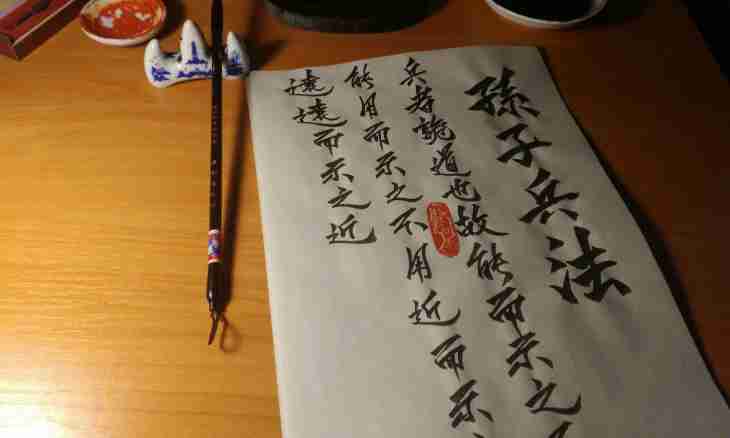To write in Japanese, the improbable assiduity and patience is required. Not without reason the Japanese calligraphy is considered one of the most difficult in the world. Special brushes and paper are necessary for writing of hieroglyphs. But as a result beautiful, graceful hieroglyphs which sometimes designate the whole word turn out.
It is required to you
- Sitadzaki - an easel (soft black mat), buntin - the metal tool for pressing of paper to a mat, hans - handmade thin rice paper, Sumi - solid ink, Sudzuri - an inkwell, big and small Fude - brushes, the textbook and the dictionary of Japanese.
Instruction
1. If it is not about simple copying, it is necessary to get acquainted with the Japanese hieroglyphs and rules of writing of words according to the textbook. And when writing to use the dictionary. Anyway, when the person knows what he writes, it very much helps him.
2. It is necessary to remember a number of rules to write beautifully and correctly. It is necessary to draw hieroglyphs from top to down and from left to right. It belongs also to ""sticks"", and to hieroglyph ""pieces"". The corner going at first to the right, and then down, is drawn together as one line. The corner going down, and then on the left - too. The others - separate strokes. From two inclined hyphens first of all that which begins on the right from above and goes on the left down is drawn. If horizontal and vertical sticks are crossed, the first draws horizontal. The vertical line crossing all hieroglyph is drawn in the last turn. But when three vertical strips are drawn, it is necessary to remember that it is necessary to begin with average. Then it is drawn left, and behind it right.
3. Before work it is necessary to lay Sitadzaki's mat on a table, and from above by means of a buntin to attach rice paper. It is necessary to create the most comfortable situation that hands and a back were not tired on a table. Work is necessary laborious.
4. It is necessary to prepare ink. Dry ink should be pounded in an inkwell which in combination is a mortar. Then ink gets divorced water to such state that they slowly flew down from a brush fude. Therefore water should be added on a drop, bringing solution to necessary consistence.
5. When the easel and ink are ready, it is necessary to begin to write, dipping brushes-fude in ink. The big brush should be used when writing large objects whereas it is better to apply to fine details small fude.
6. Upon termination of the letter drawing it is necessary to dry an inscription. If time presses, it is possible to use clean sand or special talc. It should be strewed on an inscription and in 2-3 minutes to remove. Talc will absorb damp residue of ink and the inscription will be dry.

